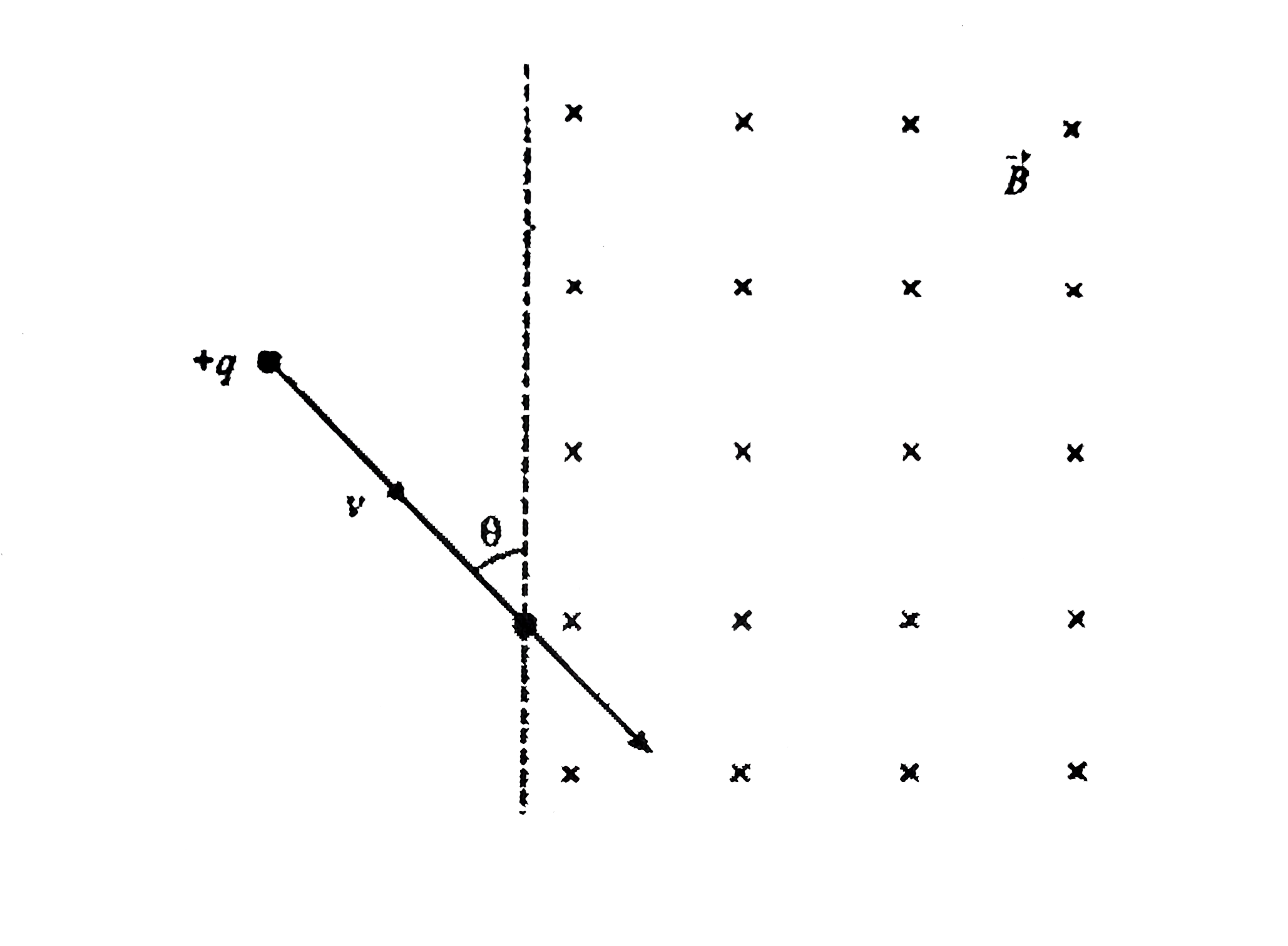A charge particle of mass m and charge q entered into magnetic field B normally after accelerating by potential difference V. Calculate radius of its circular path.
To find the radius of the circular path of a charged particle moving in a magnetic field after being accelerated by a potential difference, we can follow these steps:
Step 1: Determine the Kinetic Energy
When a charged particle with charge q is accelerated through a potential difference V, it gains kinetic energy equal to the work done on it by the electric field. The kinetic energy KE can be expressed as:
KE=qV
Step 2: Relate Kinetic Energy to Velocity
The kinetic energy can also be expressed in terms of the mass m and velocity v of the particle:
KE=12mv2
Setting the two expressions for kinetic energy equal gives:
qV=12mv2
Step 3: Solve for Velocity
Rearranging the equation to solve for v:
mv2=2qV⟹v2=2qVm⟹v=√2qVm
Step 4: Apply the Lorentz Force
When the charged particle enters a magnetic field B perpendicularly, it experiences a magnetic force given by:
F=qvB
This force acts as the centripetal force required for circular motion.
Step 5: Set Magnetic Force Equal to Centripetal Force
The centripetal force required to keep the particle in circular motion is given by:
Fc=mv2r
Setting the magnetic force equal to the centripetal force:
qvB=mv2r
Step 6: Solve for Radius r
Rearranging the equation to solve for the radius r:
r=mvqB
Step 7: Substitute for Velocity
Now substitute the expression for v from Step 3 into the equation for r:
r=m√2qVmqB
This simplifies to:
r=m√2qVqB√m=√2mqVqB
Step 8: Final Expression for Radius
Thus, the final expression for the radius r of the circular path of the charged particle is:
r=√2mqVqB
When a charged particle with charge q is accelerated through a potential difference V, it gains kinetic energy equal to the work done on it by the electric field. The kinetic energy KE can be expressed as:
KE=qV
The kinetic energy can also be expressed in terms of the mass m and velocity v of the particle:
KE=12mv2
Setting the two expressions for kinetic energy equal gives:
qV=12mv2
Rearranging the equation to solve for v:
mv2=2qV⟹v2=2qVm⟹v=√2qVm
When the charged particle enters a magnetic field B perpendicularly, it experiences a magnetic force given by:
F=qvB
This force acts as the centripetal force required for circular motion.
The centripetal force required to keep the particle in circular motion is given by:
Fc=mv2r
Setting the magnetic force equal to the centripetal force:
qvB=mv2r
Rearranging the equation to solve for the radius r:
r=mvqB
Now substitute the expression for v from Step 3 into the equation for r:
r=m√2qVmqB
This simplifies to:
r=m√2qVqB√m=√2mqVqB
Thus, the final expression for the radius r of the circular path of the charged particle is:
r=√2mqVqB
Topper's Solved these Questions
- BOOK - CBSE COMPLEMENTARY MATERIALCHAPTER - UNIT–III & UNIT–IV MAGNETIC EFFECTS OF CURRENT AND MAGNETISM & E.M.I. AND ALTERNATING CURRENTEXERCISE - LONG ANSWER QUESTIONS (5 Marks)5videos
UNIT–III & UNIT–IV MAGNETIC EFFECTS OF CURRENT AND MAGNETISM & E.M.I. AND ALTERNATING CURRENT
- BOOK - CBSE COMPLEMENTARY MATERIALCHAPTER - SAMPLE QUESTION PAPER 2019EXERCISE - Section C19videos
SAMPLE QUESTION PAPER 2019
Similar Questions
A charged particle of mass m and charge q is accelerated through a potential difference of V volts. It enters a region of uniform magnetic field which is directed perpendicular to the direction of motion of the particle. Find the radius of circular path moved by the particle in magnetic field.
View SolutionA proton is accelerated through a potential difference V, subujected to a uniform magnetic field acting normal to the velocity of the proton. If the potential difference is doubled, how will the radius of the circular path described by the proton in the magnetic field charge ?
View Solution
Knowledge Check
- Question 1 - Select One
A charged particle of mass m and charge q enters a magnetic field B with a velocity v at an angle θ with the direction of B. The radius fo the resulting path is
AmvsinθqBBmvqBsinθCmvqBDmvtanθqB - Question 2 - Select One or More
A charged particle revolves in circular path in uniform magnetic field after accelerating by a potential difference of V volts. Choose the correct options if V is doubled.
Akinetic energy of particle will become two timesBradius in circular path will become two timesCradius in circular path wil become √2 timesDangular velocity will remain unchanged - Question 3 - Select One
A particle of mass m and charge q enters a magnetic field B perpendicularly with a velocity v, The radius of the circular path described by it will be
ABq/mvBmq/BvCmB/qvDmv/Bq
A charge particle of mass m and charge q is accelerated by a potential difference V volt. It enters in a region of uniform magnetic field Bas shown in figure-4.93. Find the time after which it will come out from the magnetic field.
 View Solution
View SolutionIf a charge particle of charge q , mass m , moves in a circular path in magnetic field of induction B , under a potential of V volts then radius of circular path is
View SolutionA charged particle of mass m and charge q describes circular motion of radius r in a unifrom magnetic fiels of strenght b the frequency of revolution is
View SolutionA proton of mass m and charge q enters a magnetic field B with a velocity v at an angle θ with the direction of B.The radius of curvature of the resulting path is
View SolutionA particle of mass m, charge e and velocity v moving in a magnetic field B perpendicular to the motion of particle. The radius of its path is:
View Solution

